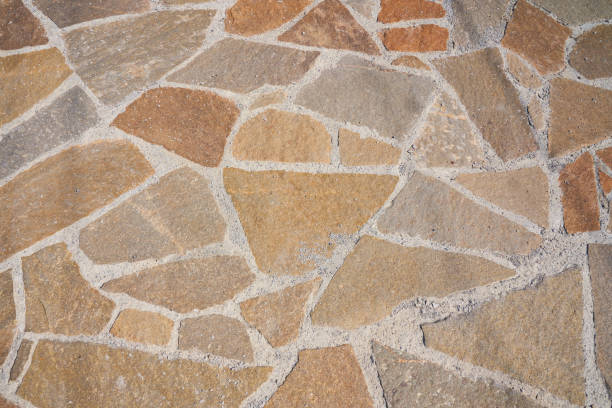The answer to whether to use ceramic or porcelain tiles depends largely on their intended application. Currently, over 80 percent of tiles deployed are porcelain, primarily used for flooring due to their superior durability. Both ceramic and porcelain tiles are commonly installed on walls, ceilings, and floors. Outdoor areas such as patios and walkways frequently feature porcelain tiles because of their resistance to weather and wear.
The choice between ceramic and porcelain tiles often comes down to factors like durability, price, color, and design. For instance, porcelain tiles are favored for flooring because of their strength and longevity, while ceramic tiles are popular for walls, backsplashes, and countertops where aesthetic variety is key.
Ceramic Tiles Have Been Used for Thousands of Years
Ceramic tiles are a testament to durability and longevity, having been used for thousands of years in various cultures worldwide. Made from clay and other natural minerals, known collectively as bisque, these components provide strength and stability to the tile body. The quality of ceramic tiles depends on production methods, the density of the clay, and the firing strength.
Porcelain tiles, a premium category of ceramic tiles, are denser, stronger, and absorb less water than traditional ceramic tiles. Porcelain is fired at higher temperatures ranging from 1,800 to 2,200 degrees Fahrenheit, resulting in color permeating throughout the tile body. This means chips or cracks are less visible because the color is consistent inside and out. Due to their robustness, porcelain tiles are ideal for outdoor use, even in freezing temperatures, earning the nickname “hard ice” for their resilience against harsh weather conditions.
Porcelain and Porcelain Veneers Assessed by the Porcelain Enamel Institute (PEI)
The Porcelain Enamel Institute (PEI) sets industry standards for porcelain tile durability, which align with ASTM (American Society for Testing and Materials) guidelines. Tiles are rated based on appropriate usage:
- PEI I: Suitable for light residential use, primarily walls and surfaces not subject to heavy foot traffic.
- PEI II & III: Ideal for moderate foot traffic areas such as kitchens and bathrooms.
- PEI IV & V: Designed for heavy commercial use, including shopping centers, airports, and other high-traffic locations.
Tile sizes such as 6×6 or 8×8 inches can be arranged efficiently for both walls and floors, offering versatility in design and function. Always ensure to select tiles based on the specific application and foot traffic to maximize performance and longevity.
Suitable for Residential, Commercial, and Light Industrial Applications
Porcelain and ceramic tiles are widely used in residential, commercial, and light industrial settings thanks to their durability and versatility. Tiles with a glazed finish provide enhanced stain resistance and a vast spectrum of colors and finishes. Unpolished tiles tend to offer better slip resistance, making them ideal for wet areas such as bathrooms and kitchens.
Non-glazed, textured tiles often excel in high-traffic or outdoor environments due to their increased wear resistance. Selecting the right finish based on the location can improve safety and longevity.
Anti-Slip Tiles Featuring Abrasive Surfaces for Safety
Some tiles come equipped with abrasive or textured surfaces that significantly reduce the risk of slips and falls. These tiles are particularly suited for public buildings, outdoor walkways, and shower areas. The Mohs hardness test is commonly used to assess tile resistance to scratching and wear, helping consumers choose the most durable option for their specific needs.
When choosing tiles, remember that quality and durability correspond with price; investing in higher-quality tiles often ensures better performance and longer service life. Always consult professionals and real estate experts to make informed decisions that align with your aesthetic preferences and functional requirements.
Before installation, ensure the subfloor is dry, solid, and level to prevent future cracking or damage. A “spongy” or damp subfloor, such as untreated plywood or wet basement floors, can compromise tile adhesion and integrity. Proper installation enhances both the beauty and durability of ceramic or porcelain tiled surfaces.
Installing quality ceramic or porcelain tiles not only elevates the aesthetic appeal of your home or commercial space but also adds lasting value. Their ease of maintenance, durability, and wide range of styles make them an excellent investment for any property owner.
If you want to learn more about tile types, installation techniques, or maintenance tips, explore our comprehensive resources in the Wood Look Tile Flooring section available under the interior design category.
In addition to their functional benefits, ceramic and porcelain tiles are increasingly favored for their eco-friendly properties. Many manufacturers now produce tiles with reduced environmental impact by using sustainable materials and energy-efficient production methods. Tiles also contribute to indoor air quality by not emitting volatile organic compounds (VOCs). This makes them a smart choice for environmentally conscious consumers looking to combine style, durability, and sustainability in their flooring and wall solutions.

























